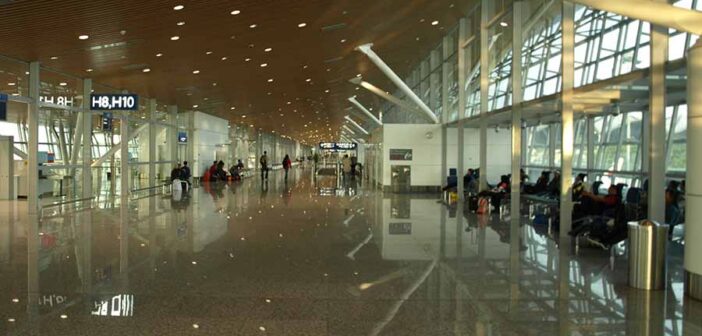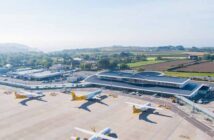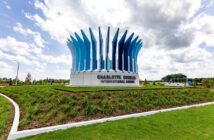Travellers arriving at Kuala Lumpur International Airport step into two main terminals about two kilometers apart, with Terminal 1 serving full-service carriers like Malaysia Airlines and Emirates across 36 gates in the main building plus a satellite concourse, while Terminal 2 caters to low-cost airlines such as AirAsia at 68 gates linked by a skybridge.
Passengers transfer between terminals via the free Gateway@klia2 bus every 15 minutes for a five-minute ride or the Express Rail Link train connecting in 10 minutes from dedicated platforms.
The design features multi-level structures with the main terminal ground floors for baggage claim and check-in, upper departures leading through security to piers and gates reachable in 10 to 15 minutes on foot via wide corridors and moving walkways, all supported by two runways that processed over 60 million travelers in 2024 through efficient flows aided by self-bag drop kiosks.
The airport positions 45 kilometers south of Kuala Lumpur’s city center along the Elite Highway off the MEX Expressway, a 45- to 60-minute drive through light suburban traffic on the E26. The KLIA Ekspres train departs KL Sentral every 15 minutes nonstop for 55 ringgit taking 28 minutes with comfortable seats and luggage space, while the KLIA Transit adds stops at Bandar Tasik Selatan and Putrajaya for 55 ringgit in 35 minutes.
Ridesharess like Grab arrive at departures curbs for 100 to 150 ringgit covering the distance in 50 minutes, taxis queue outside arrivals for a metered 120-ringgit fare, and airport coaches run from KL Sentral every half hour for 15 ringgit in 60 minutes. Rental cars from Hertz and Avis operate in a consolidated center shuttled by free buses every 10 minutes, and parking garages next to Terminal 1 charge 30 ringgit daily with 2,000 spots, long-term lots farther out at 20 ringgit that reserve via app during peaks.
Security advances at checkpoints open from 4 a.m. to last flight, where autogates and Fast Track lanes for eligible passengers keep waits under 10 minutes typically, though morning peaks or manual bag scans add 20 minutes. Connections handle 60-minute minimums for international transfers via the Aerotrain in Terminal 1, offering time for a pier lounge or quick walk, while shifts between terminals require clearing immigration and customs in 30 to 45 minutes before baggage recheck or rail boarding.
On-time departures average 80 percent from carrier data, backed by 700 daily movements across the runways, but monsoon rains in afternoons or Aerotrain maintenance slots often lead to 25-minute holds, and the airport app notifies for power fluctuations or staffing rotations.
Dining covers over 100 outlets in both terminals, from early Starbucks at 4 a.m. in Terminal 1’s atrium to sit-down spots like Nasi Kandar Pelita for curries or Marini’s on 57 for views and cocktails running 5 a.m. to 11 p.m. with local satay and teas. Retail threads the concourses with Relay for snacks and papers from dawn, duty-free zones stocked with Penang white coffee and perfumes for international routes, and stores like Bata for shoes or tech kiosks near central hubs.
Facilities include free Wi-Fi renewable every two hours across the terminals, charging stations at gate clusters, pet relief areas airside with pads in both buildings, and nursing rooms post-security with locks plus The Butterfly Effect service for special needs. Lounges such as Plaza Premium in Terminal 2 and Malaysia Airlines Golden Lounge in Terminal 1 provide showers and buffets for 50 ringgit entry, prayer rooms sit quietly in each pier, and accessible lifts with priority queues span the site. The terminals operate with info desks staffed from first light, supplying clear routes for the next leg.




